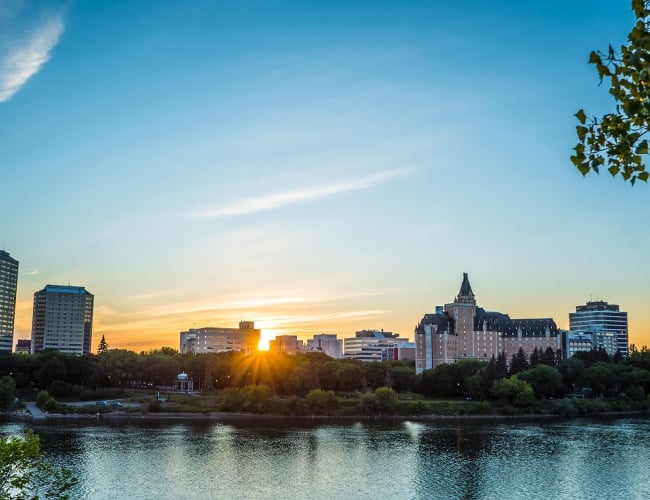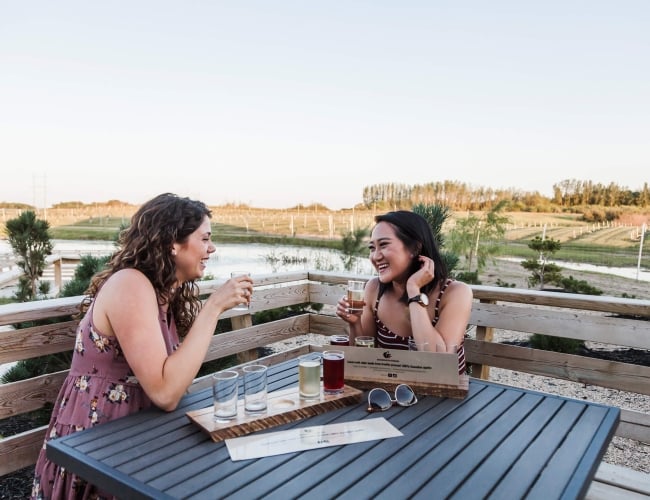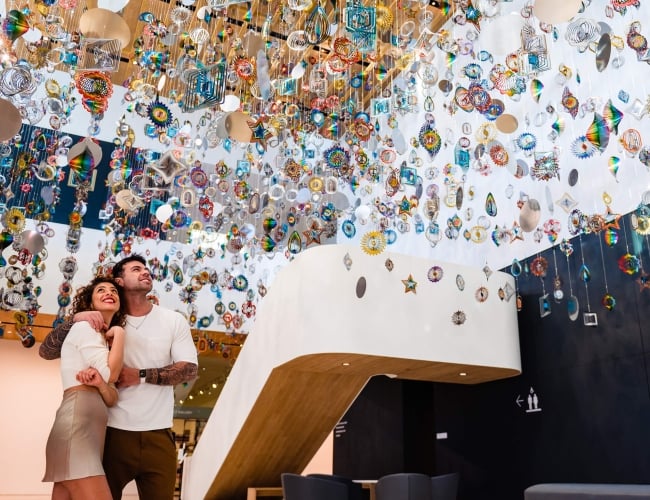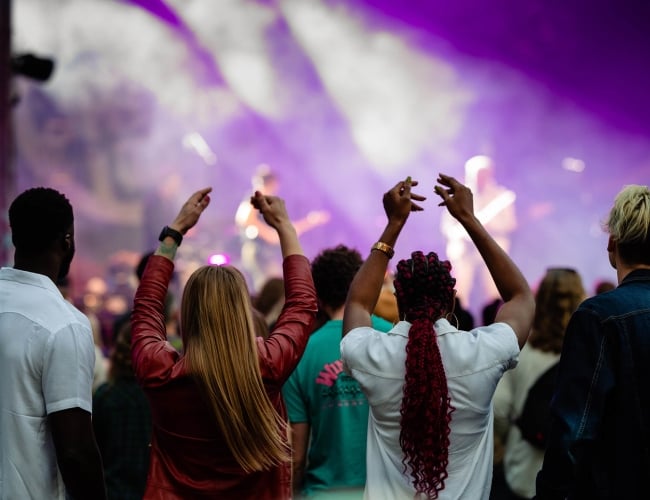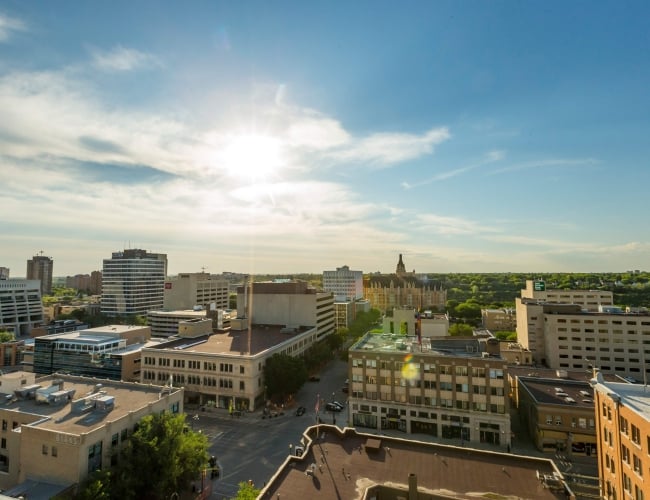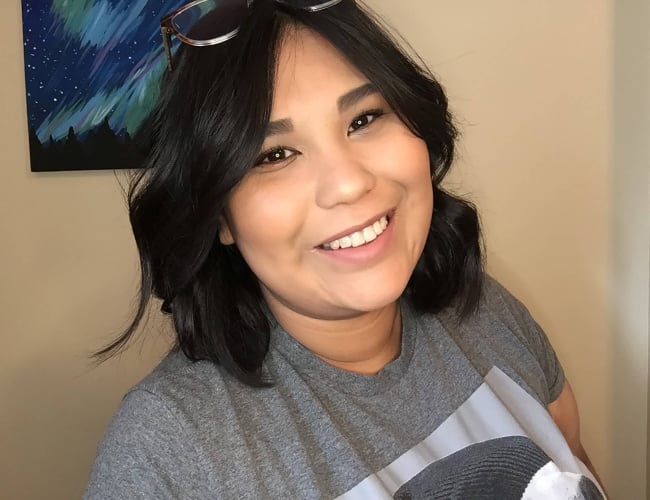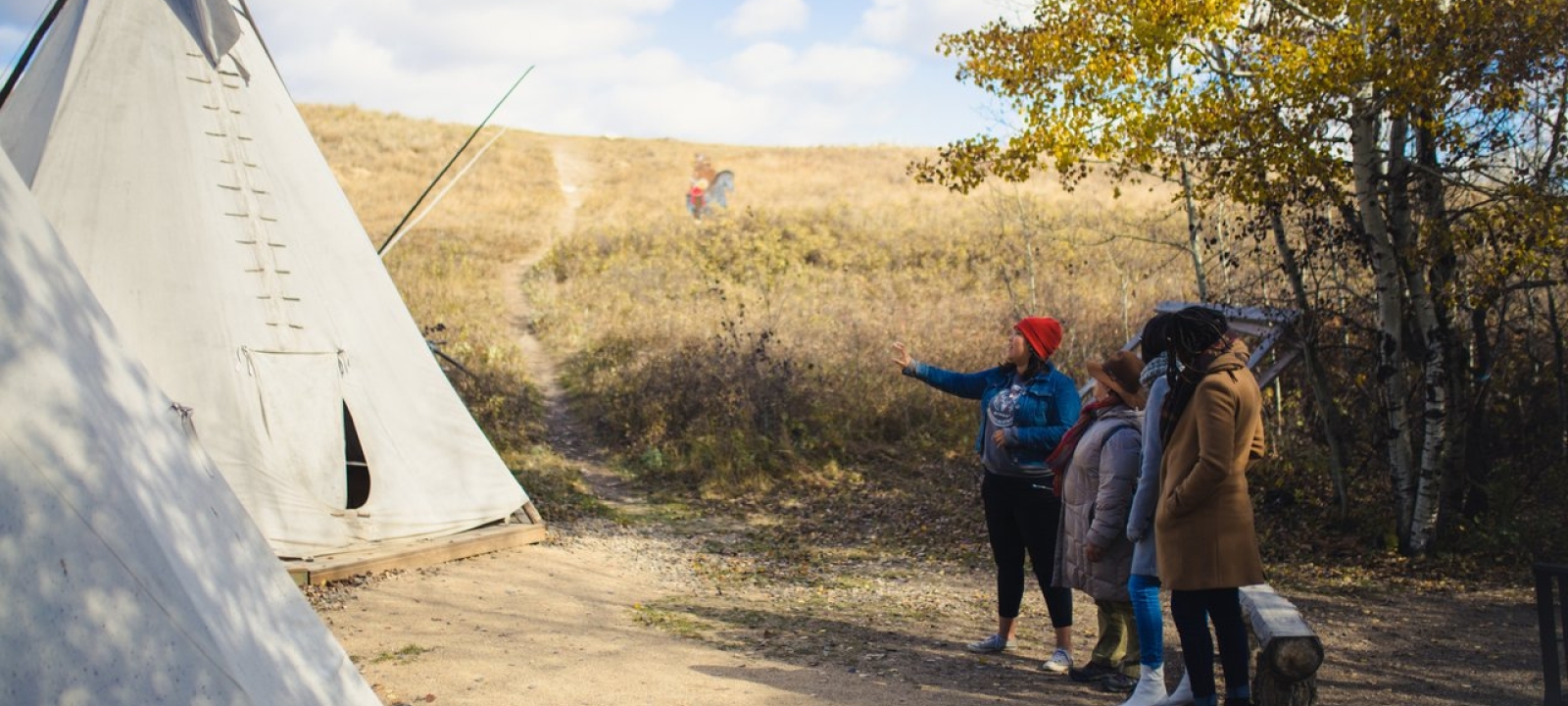
Reconciliation and Tourism: National Indigenous Peoples Day
National Indigenous Peoples Day in Canada is celebrated June 21st on the Summer Solstice. June is a beautiful time of year when the berries and flowers bloom, the sun stays out longer, the first real thunderstorms of the season hit, and of course, it is a time of learning, growing, and celebrating. In June we celebrate 2SLGBTQ+ communities and National Indigenous History Month. As a queer nêhiyawiskwêw, I love this time of year. There is a word I absolutely love and carry with me in my day-to-day: wâhkôtowin (WAH-Goh-to-win). This means kinship, or all my relations, in nêhiyawêwin (Cree). This is a Natural Law teaching which means that we are all related and connected in this circle.
tânisi, Honey Constant-Inglis nitisîyikasôn, pakitahwâkansâkahikanihk ochi niya. Hello, my name is Honey Constant-Inglis, I am Plains Cree from Sturgeon Lake First Nation. I am an Indigenous Artist, Archaeologist and Heritage Educator. I love sharing my knowledge of archaeology alongside my Plains culture. My journey in life has led me to Wanuskewin Heritage Park where I have been from 2017 until 2021. During my time there I had the beautiful pleasure of leading tours, hearing meaningful conversations, and hosting sharing circle discussions relating to the archaeological record and cultural heritage of Wanuskewin and the Opimihaw Valley.
Since then, I am privileged to say that I now own my business: Honey Willow nêhiyaw studio Studio. Honey Willow is an inclusive and welcoming space for everyone on their reconciliation journey. Our community is the heart of our work that honours Indigenous heritage through workshops, beadwork, and community initiatives. We create space for dispelling myths, turning theory into practice, and connect meaningfully with one another.

Honey Constant working at a dig site.
Since I was a child, I have been very curious about the workings of the world and what made me…me. As a young adult I started to deep dive into the Truth and Reconciliation Commissions Final Reportand 94 Calls to Action. You see, I am the granddaughter of Residential School survivors and I carry intergenerational trauma. In my undergraduate years, I was using my archaeology courses to help navigate the bumpy road of Indigenous history- both past and present. From this, I discovered that many of us are learning. Reconciliation to me, is to acknowledge and learn how systems have oppressed and disenfranchised Indigenous peoples. It is the recognition of our roles in these systems and our responsibility to break down barriers to compassion. As well, reconciliation is the truth telling, habit-destroying, hand-in-hand relationship building that we need between communities. This relationship is about learning together and moving forward to meaningful change. There is no wrong way to do reconciliation if you are actively learning and growing.
Photo courtesy Honey Constant
In terms of tourism, this means actively searching out authenticity and amplifying Indigenous voices. My field of Indigenous archaeology gained traction in the 1990s as a result of Indigenous activism. How tourism can contribute to reconciliation is to provide space for Indigenous peoples to tell their own stories. After all, they are the descendants and living reminder of that history. I am writing this blog that you are reading and that is authenticity. Does this mean that every Indigenous person will have the same story as me? Not at all. We are all unique and tourism’s role is to highlight the variety of languages, cultures, and cuisines that we have across Canada.
Creating space is always a great way to contribute to reconciliation. To take a step back and listen to the stories. I wanted to share my background with you because it is what makes me…me. The bumps and bruises all have silver-linings. There is always a lesson to learn and that makes us stronger. At Wanuskewin, they provide programming that will further the appreciation and understanding of the Northern Plains Indigenous Peoples and be a living reminder of the people’s sacred relationship to land. I would argue that we have been doing reconciliation work since we started in the 1980s. Dr. E. Walker and some Saskatoon community members were moving to protect the valley and they knew the Indigenous peoples needed to be at the table. I personally was not alive during this time, but I gather that this was the first-time consultation and collaboration was being done with Indigenous communities. Before the Elders were committed to walking the journey with Wanuskewin, they held space for ceremony. They had a sweat in the valley and after the last round they all sat in the grass until the Elders spoke. They had mentioned that they believed it was always meant to happen and this space would be good for Indigenous peoples to learn about themselves and for non-Indigenous peoples to learn something about Treaty and obligations. Remember that word: wâhkôtowin. Everything is connected. When I was in grade one, I remember coming to Wanuskewin and having that moment of “Wow. This is my culture. This is me”. In my master’s program and in all my tours, this is the same moment I want people to experience in their own way. It is my hope that our guests and visitors learn about Northern Plains Indigenous Peoples, begin to question stereotypes, and breakdown the myths. 
It might be the daydreamer in me but let’s reimagine what it means to visit a museum. We are not mannequins dressed in hide clothing or a notion of the past. We Indigenous peoples are thriving communities of scholars, storytellers, jokesters, and healers. We are your neighbours, your friends, and your allies. This National Indigenous Peoples Day let's commit to learning, growing, and celebrating together. I invite you out to Wanuskewin year-round to join our programs, see the exhibits, and ask them questions!
Catch up with what Im doing in the community and get active in your own journey to reconciliation with Honey Willow. I post a lot of real-time growing over on my Instagram page @HoneyWillowCreations or on my website HoneyWillow.ca. Keep a lookout for local organizations such as Reconciliation Saskatoon for community connections with Elders, Survivors, and like-minded individuals. Remember, Indigenous food carries generations of memories in every bite, and every experience is the gift of kinship. As it is safe to travel, broaden your experiences by visiting other Indigenous heritage sites like Head-Smashed-In Bison Jump, or Writing on Stone, Alberta. If travelling is not an option just yet, you can listen to a few of the podcasts I have done about my work and the park (Shameless plug, I know…).
If there is anything I hope you learn today, it is that the best way to be an ally is get out and learn, experience, and celebrate with us. Ask questions, listen to the deeper meanings of our stories, and use the safety of your voice to breakdown stereotypes.
kinanâskomitin nitotêmak!
I am very thankful for you, my friends!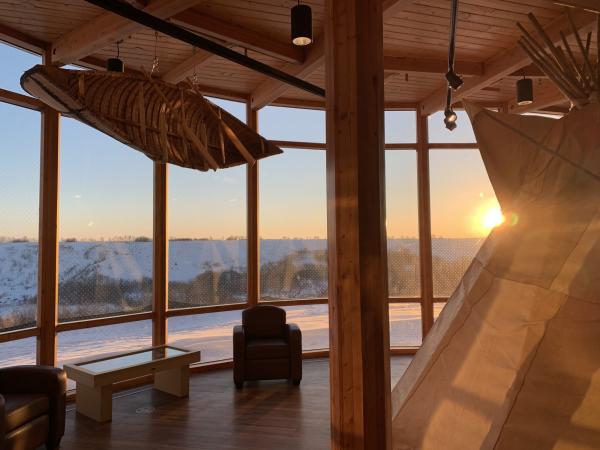
Sunrise at Wanuskewin
